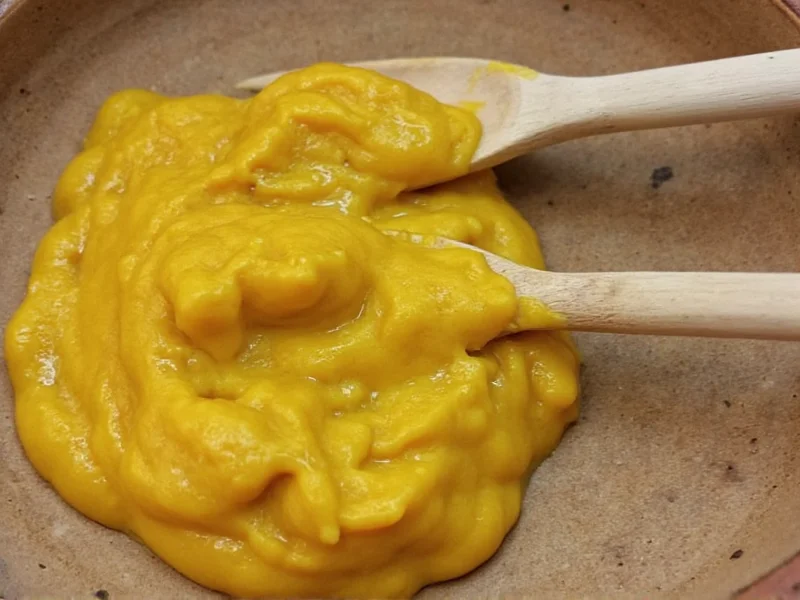While many condiments have murky origins, mustard's history is remarkably well-documented across multiple ancient civilizations. The story of where mustard came from spans continents and millennia, revealing how this pungent condiment evolved from medicinal plant to kitchen staple.
The Ancient Roots of Mustard Seeds
Archaeological evidence confirms that mustard seeds were among the earliest cultivated plants. In the Indus Valley, mustard seeds have been found in sites dating back to 3000 BCE. Ancient Sanskrit texts reference mustard oil production, while Chinese herbals from the same era mention mustard seeds for both culinary and medicinal purposes.
However, these early civilizations primarily used mustard seeds whole or crushed as medicine rather than as the prepared condiment we recognize today. The transformation from seed to sauce happened later in the Mediterranean world.
Roman Innovation: The Birth of Prepared Mustard
The critical development in the history of mustard condiment occurred in ancient Rome. Roman writers like Cato the Elder (234-149 BCE) documented the preparation of \"mustum ardens\"—a mixture of crushed mustard seeds and unfermented grape juice (must). This combination created the distinctive sharp, burning sensation that gave mustard its name.
Roman soldiers spread mustard preparation techniques throughout their empire. By the 1st century CE, the Roman author Pliny the Elder documented over 60 medicinal uses for mustard in his \"Natural History,\" showing its importance beyond just flavoring food.
Medieval Mustard: From Monasteries to Markets
After the fall of Rome, mustard production continued primarily in European monasteries where monks preserved Roman culinary knowledge. By the 9th century, French monasteries near Dijon began developing the techniques that would later make Dijon mustard famous.
The 10th-13th centuries saw mustard become increasingly commercialized. In 1292, the first recorded mustard maker appeared in Parisian tax records. By the 14th century, \"verjus\" (sour grape juice) replaced unfermented grape juice as the liquid base in French mustard, creating the smoother texture we associate with European mustards today.
| Era | Key Mustard Developments | Geographic Centers |
|---|---|---|
| 3000-500 BCE | Mustard seed cultivation begins; used medicinally | India, China, Mediterranean |
| 500 BCE-500 CE | First prepared mustard (mustum ardens); Roman spread | Roman Empire |
| 500-1500 CE | Monastic preservation; commercial production begins | French monasteries; Dijon region |
| 1500-Present | Global spread; regional varieties develop | Worldwide |
The Etymology of \"Mustard\"
The word \"mustard\" directly traces back to its Roman origins. The Latin phrase \"mustum ardens\" (burning must) referred to the combination of \"must\" (fresh grape juice) and the \"ardens\" (burning) quality of the mustard seeds. Over centuries, this evolved into the Old French \"moustarde\" and eventually the English \"mustard.\"
This linguistic journey perfectly illustrates how the earliest recorded use of mustard as a prepared condiment shaped both the product and its name across European languages.
Global Spread and Regional Variations
As trade routes expanded, mustard traveled worldwide. British colonists brought mustard seeds to North America in the 17th century, where they naturalized across the continent. In the 19th century, German immigrants to the United States began mixing mustard with beer, creating the distinctive yellow ballpark mustard Americans recognize today.
Different regions developed unique mustard varieties based on local ingredients and tastes:
- French Dijon: Made with verjus or white wine, creating a smooth, sharp flavor
- German: Often darker, made with beer and less vinegar
- American yellow: Bright yellow from turmeric, milder flavor for hot dogs
- English: Made with vinegar and flour, creating a thicker texture
- Chinese: Often includes chili peppers for additional heat
Mustard's Journey from Medicine to Condiment
For most of its history, mustard served primarily medicinal purposes. Ancient physicians prescribed mustard plasters for respiratory ailments and used mustard as a digestive aid. It wasn't until the late Middle Ages that mustard became primarily a culinary condiment rather than a medicine.
The transition happened as European cuisine evolved to appreciate stronger flavors. By the Renaissance, mustard appeared regularly in cookbooks as a sauce enhancer rather than a remedy. This shift represents one of the earliest examples of a food item transitioning from medicinal use to mainstream culinary application.
Modern Mustard Production
Today, Canada and Nepal are the world's largest producers of mustard seeds, though France remains famous for its prepared mustards. The basic preparation method remains remarkably similar to Roman techniques: grinding seeds and mixing with liquid (vinegar, wine, or water).
The key difference in modern mustard is the treatment of seeds before grinding. Enzymes in mustard seeds create the characteristic heat when mixed with liquid, but this reaction can be controlled by:
- Using cold liquids to slow the reaction (milder mustard)
- Using hot liquids to deactivate enzymes (very mild mustard)
- Adding acidic components like vinegar to stabilize the heat level
Understanding the earliest recorded use of mustard helps explain why certain varieties taste the way they do today. The fundamental chemistry discovered by Romans continues to guide mustard makers worldwide.











 浙公网安备
33010002000092号
浙公网安备
33010002000092号 浙B2-20120091-4
浙B2-20120091-4